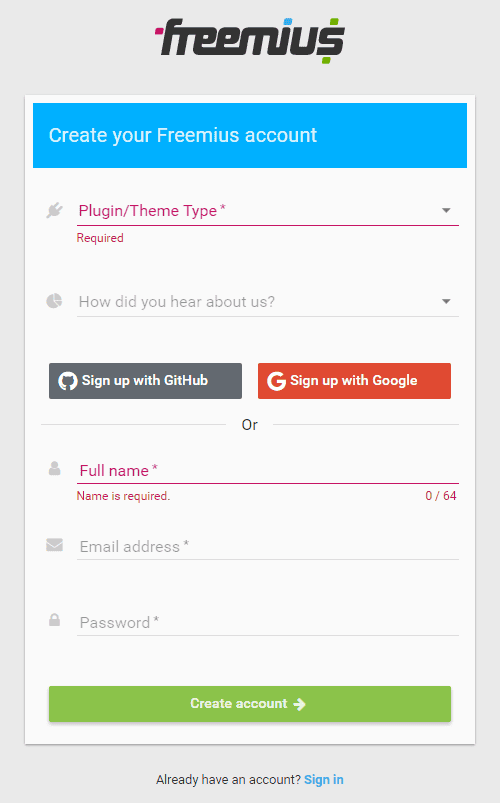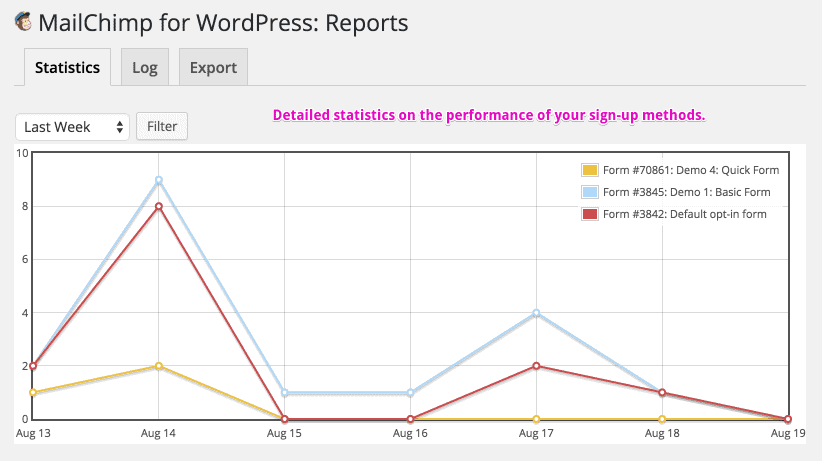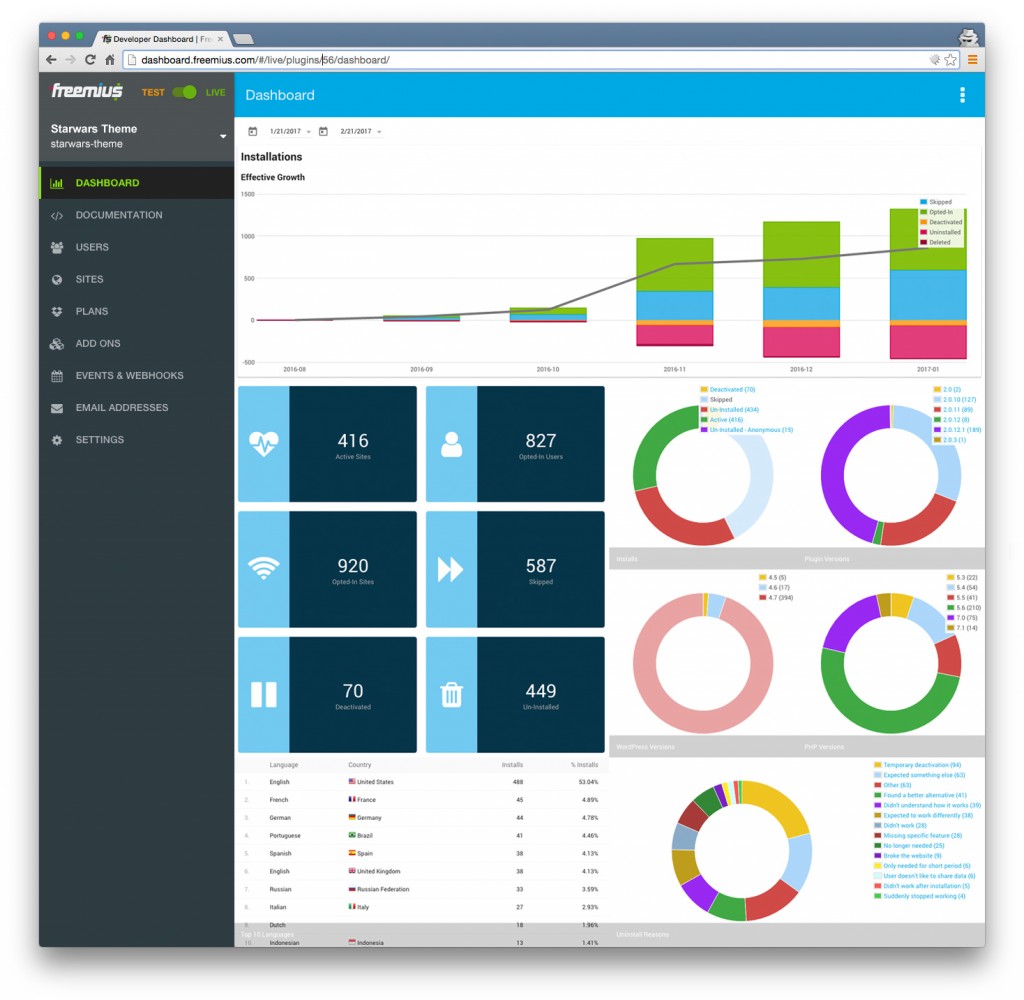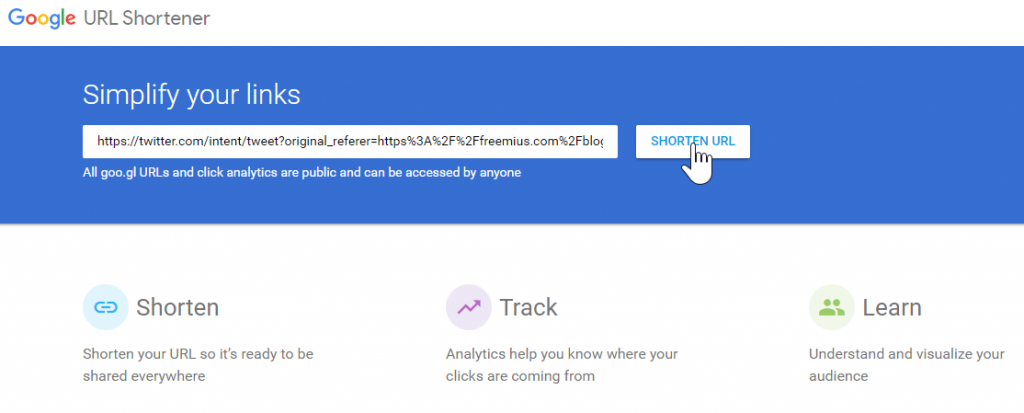|
|
If somehow you happened to have missed the successful product launch of Freemius Insights for WordPress Themes from a couple of weeks ago – just read this to get updated.
At the end of the day, after all of the dust had settled and we were happy with the number of new users, I decided to take the time to share the “behind the scenes“ of planning and executing such a product launch in the WordPress sphere. Hopefully, by doing so, all you WordPress makers out there can make use of some of the techniques I’ll mention here for your next launch.
It goes without saying that to have a successful product launch you are going to need to have a product, preferably a good one 🙂
This article is going to focus on techniques that will help you stir interest and get your product launch noticed in the ecosystem. That said, if you manage to get people absorbed and sign up – you want to be sure that your product delivers value and that they are actually happy using it. Otherwise, all of your marketing work will have been in vain. Now that we’ve got that out of the way and your WordPress product is ready to meet some traffic – let’s look at the ways to do that:
Now that we’ve got that out of the way and your WordPress product is ready to meet some traffic – let’s look at the ways to do that:
Preparation Work
What’s Your Official Launch Day?
First thing’s first – it’s important to set an official launch day and get all of your team members aware and aligned with it. All of your efforts and tasks should be done and ready before that day arrives.
It’s important to set an official launch day and get all team members aware and aligned with it.
The day the Freemius team had its sights on for the ‘Insights for Themes’ launch was the 23rd of February, and we took care to synchronize everything towards it. Everyone’s tasks were allocated and were due at least a few days prior to that date, to leave a margin to identify errors and address them:
- Developers need to wrap up development tasks (yes, testing included).
- Support needs to be informed about the new product features and capabilities in order to be able to answer any technical (or non-technical) questions from prospects.
- Designers need to have all of the relevant material ready for public exposure.
- Marketing has to have all of the relevant content ready for publishing, and all of the channels ready to distribute it.
An added benefit of synchronizing everyone around a specific launch date is it adds a sense of urgency and focuses your team towards a tangible target.
Ready The Product
This may sound a bit obvious and needless to say, but, the first thing we needed to make sure was working was our new product. Going through the whole process of registering, downloading, integrating, activating, and actually using it, to make sure that when it’s time for the actual users to experience it – there are no hiccups or use-cases we hadn’t thought of and prepared for.
Data Collection
Make sure you’re collecting all of the data you need from new users when they sign up for your product. There will not be a better time to do that after they will have started using it.

At the very least you are probably going to want to know:
- Their name
- Their email address as a way to communicate with them. If you read the article I just linked to – you’ll understand why you want to mark those two fields as mandatory.
*If you are launching a WordPress plugin or a WordPress theme and are using Freemius Insights, then there’s no need to collect this data, as it is part of what’s being automatically collected for you from your opted-in users 🙂
Prepare A Screenshots & Logos Toolkit
One of the big time-savers we’ve been able to come up with for this product launch was investing some time early on in preparing a toolkit of screenshots and logos of our new product. This kind of toolkit came in handy multiple times for us until we officially launched (as well as afterward) when we used it on our product’s landing page, guest articles, media covers, paid promotions, etc.
You’ll want to make those screenshots look good, and by “look good” I mean not only aesthetically (which is obviously important), but have them also include some data, rather than just taking lame captures of an empty, “theoretical product”. Try to show whatever it is your plugin or theme does best on those screenshots. The person who sees these screenshots should be able to look at them and have an easy time imagining it belongs to them.
Let’s look at an example:
Let’s say you are about to launch a WordPress plugin that lets site owners easily subscribe their site visitors to their MailChimp list. Something like ‘MailChimp for WordPress’. In that case, you could grab a few good screenshots of what designing your newsletter subscription form looks like on your plugin:

In addition, consider providing a pre-populated screenshot of the statistics your plugin can provide about the performance of your subscription forms:

You can check out their great screenshots in the repository.
In our case, for ‘Freemius Insights for Themes’, we grabbed screenshots that demonstrate all the relevant features our product offers, as well as a pre-populated example of a dashboard, filled with the kind of data it can provide a WordPress theme owner with:

Make sure to include screenshots of every great feature your new product offers and be sure to make it look good. Thinking ahead, many writers will not bother to go and grab their own custom screenshots, so you want to be ready with your toolkit. The images you produce will be the ones used by all of the news sites that cover your product’s launch. Save their time and effort and make your product look good right out the gate.
Content Marketing
Naturally, the whole purpose of “launching” your new product is for as many relevant people as possible to hear about it. For a successful product launch – you’re going to need to do some smart marketing work. Okay, maybe even more than just some. Don’t worry though – I’m going to walk you through the steps; it’s not that bad, and I promise it will pay off!
Produce A Screencast
No matter who your product serves, whether it’s a WordPress plugin or theme for site owners, or maybe some B2B SaaS product for other sellers – your users could use an easy-to-follow-along video guide to quickly show them around.
When I produced the screencast for our new product, I made sure to write the script beforehand, so I get the chance to properly plan how I am going to address my designated target audience. In our case, I’m guiding WordPress theme developers, who are likely to be tech-savvy. That’s why I allowed myself to delve into the technical details and demonstrate the integration process:
We had no problem investing the time and resources in a video guide about our product because we knew it would pay off later on, as we would be able to reuse it for multiple needs, such as:
- Marketing:
- Our official announcement post
- Future blog posts
- Other bloggers/sites can embed it
- Our YouTube channel
- Share it on social media channels
- Promotional paid ads
- Our newsletter
- Add it to an email signature
- Support:
- As a walk-through guide in the product’s welcome screen
- An embedded video inside our knowledge-base
- As a visual explanation for support tickets
We invested in a video screencast because we knew we would be able to reuse it for multiple needs.
Write An Official Announcement Post
Your official announcement should be published on your company blog. You have a company blog, don’t you?!
An official announcement is good for a couple of reasons:
- All of the other places that report/review your product launch will have one central place to link to, sending all of the readers straight into “your hands”.
- Those backlinks give you important points in the battle for search engine ranking (SEO) and help position your website as an authority in the field. Backlinks (provided that they are legit) are considered by search engines as some sort of a signature of approval that your content is relevant and valuable, and that’s why other sources are linking back to it.
In fact, the last link I had provided to a website called Moz should assist in establishing it as an authority in the field of SEO, as far as search engines are concerned. You’re welcome, Moz 😉
Build Personal Relationships with Relevant Bloggers
Maintaining a high-quality blog or a news coverage site persistently is hard, and the people who do it deserve much respect for all the work they put in. That said, those news sites and often-updated blogs need good material to write about, so by maintaining a healthy relationship with the people behind those sites and being able to occasionally provide them with scoops or topics to write about is actually a win-win situation. They get relevant items for their readership, and you get coverage.
Keep in mind that building a relationship is more of a long-term thing that can take some time to establish, but if you’re a product maker – it is quite important and beneficial. The trick here is to keep that relationship healthy by gradually kicking it up a notch:
- Start with quick “digital interactions”: Likes/Retweets/Replies/Comments on their site.
- Then, see if there’s an option to take it to a more personal level via email, but definitely don’t force it, at this point.
- The “pro-level” to aspire to is a face-to-face encounter. I realize that this is not always possible for everyone, depending on where you’re localized on this planet, but if you do make an effort to show up at WordCamps and meetups you should be fine.
If you follow them on Twitter, you’ll be able to keep tabs on their events attendance.
https://twitter.com/beckyddesign/status/859131106255351808
On the actual event, the easiest and most effective way would be to get introduced to them by a mutual friend, or just someone that knows and has some nice things to say about you 🙂 - After you’ve been personally introduced/engaged with the writer/editor you should send them a Facebook friend request right then and there, so you can stay in touch. Let them type in their name on your phone, just to increase the chances of them approving your request. From my personal experience (and other WordPress people I’ve talked to), while it is considered personal, Facebook seems to be used by many in the WordPress ecosystem as a comfortable communication tool. Far more useful than email, which many simply ignore.
It’s important to note that you should NOT abuse this tool. Only use it to reach out when there’s something big for you, as well as something valuable and concrete for the other side to gain.
In case either you or them are not on Facebook, an alternative communication channel that also works great for this is the Post Status Slack community, which is available for premium Post Status members. Many WordPress writers are on there and are as far as a quick DM. Again – do not abuse this channel. Nobody likes to constantly be harassed.
In the long run – the important thing is that when the time comes for you to get some coverage from them about your product launch – they will be much more inclined to listen to what you have to say, as opposed to just someone cold-emailing them, out of the blue.
When the time comes for you to get some coverage they will be more inclined to listen, cause you’re not just cold-emailing them.
Line Up Your WordPress Media Coverage
When trying to get relevant media coverage for your product, there are a few ways to go about it:
- Ghost Post – There’s the strategy of creating ghost posts and sending those over to news publications or popular blogs and have them publish them under one of their resident writers. Ghost posts can save you money because they (the publishers) don’t actually have to do any writing – they only publish what you prepare for them. Very popular publications might charge a relatively small publication fee, just for enabling you to reach their big readership and potential traffic. That’s mostly reasonable.
A big bonus with ghost posts is that YOU get some control over the narrative, and could have things presented the way you want them. - Paid Reviews – That’s basically paying someone to dive deep into your product and create a thorough and honest review of it. Things can potentially go “bad” with paid reviews because no one is going to write a great, 5-star review if they didn’t actually think that about your product. You are essentially paying to get your product reviewed by industry people, but they are most definitely not obligated to adore it.
Plus, as the word ‘paid’ suggests, a paid review is going to cost you some $$. - Help Them Help You – This is mostly the approach we prefer to go with for our product launches. What it means is you kindly take advantage of a connection you have with a person that’s involved in a publication that’s relevant for your launch. You ask them for the opportunity to get covered and hope for the best 🙂 We’ve found that usually when taking the right approach to this – it works out great.
If you try this approach – you will be better off providing them with all of the relevant material and details such as product screenshots, data, screencast, logos, background about the product and the company behind it, information about the target audience, and what are your objectives. Additionally, a good quote or two from you, as the product maker, would help enrich their coverage and make it look more professional.
As I mentioned, we like to go with the last approach, so several weeks prior to the date we had set as ‘Official Launch Day’ we made a list of all the relevant publications which we wanted to cover our launch and got in touch with our connections, one by one. In our case, we launched a product for WordPress theme developers, so we tried to have it covered in places where that target audience might go to consume content:
- WP Tavern – “Freemius Launches Insights for WordPress Themes”
- WP Mayor – “Removing The Blindfold for WordPress Theme Authors With Freemius Insights”
- WP Lift – “Freemius Insights: Metrics Analysis for Theme Developers”
- Tom McFarlin – “Insights for WordPress Themes by Freemius”
- Torque Magazine – “Data And The WordPress Community”
- WP Engine – “Get WordPress Theme Analytics And Insights With This New Integration”
- WPML – “Introducing Freemius for WPML Partners”
- GoDaddy – “Usage tracking is crucial for WordPress theme developers. Here’s how to do it.”
As you can see, some of those product launch reviews were published as reviews, made by the publication’s own writers, while others were posted as guest posts, written by us. We haven’t found any significant difference, results-wise, that would point to one better option, out of the two. It seems like it doesn’t matter all that much.
As far as the publish time, you cannot control everything. There may be things you will not be able to anticipate (such as #WPDrama that tends to steal people’s attention, or technical difficulties), but you should still try to coordinate all of these to come out relatively close to the date on which you launch your product.
As a side note, I would emphasize that you want to have your company’s blog official announcement come out first so that all of the other publications can link back to it (see the ‘official announcement post’ section above).
Be Persistent
When contacting publications about publishing your product review – you should persistently follow up with them. People are busy and may miss your email. If they don’t reply within a reasonable amount of time – follow up with a quick one:
Hey [name],
Have you seen my email from 2 days ago about our new product review?
It’s kind of urgent for me, so I’d appreciate your quick response 🙂
Thanks!
In case they haven’t seen it – they will likely reply this time, and if they just were simply too busy to reply – this will help expedite their response. Just make sure you’re not left hanging until the last minute if you want a meaningful product launch that gets covered and noticed.
Say Thank You
Saying “thank you” is obviously a good rule of thumb in life, but when dealing with bloggers and news publications – thanking them for covering your stuff (free or paid) is the way to cultivate long-term relationships. Also, it will likely make the process easier for you the next time you need to contact them.
Promotion & Distribution
Lining up all those reviews and media coverages of your new product is great because you’re effectively using all of these publications as distribution channels to help your product reach more and more potential users. It’s great, but you would do even better making an effort to push all of those reviews through your channels, as well.
We’ve been regularly experimenting with various distribution channels, and have been getting different results over time. Here are the channels we found that work well for our target audience (WordPress product makers):
Share Buttons
Make sure your official launch blog post has social sharing buttons because many readers are likely to want to come in and share the official announcement. It is worth it to take some time to customize the location and type of share buttons you place on your blog/website. If someone wishes to share your content on one of their channels that button had better be easy to find. Otherwise, your content will not get shared.
Consider it as a favor your readers might be willing to grant you. You want to help them do you that favor by making those share buttons discoverable, but not intrusive!
Exclusive Early Access / Influencer Marketing
Since you are the one holding the keys – you can decide to grant free, exclusive access to your product to whomever you like 🙂
Use this power to get some influencers to check out your product by personally offering them exclusive early access. If they agree to use it and provide positive feedback – you should consider mentioning it in your testimonials section. You should also be willing to embrace any negative feedback provided and consider iterating on it down the road. Here’s a great recent answer, from our friend Mario Peshev to the question: “Why is influencer marketing growing faster than digital ads?”
What’s great about influencers and those with a strong tendency to share their experiences online is that you occasionally might get an unexpected quick and free product review:
Promote Shamelessly & Make Sharing Easier
After your content has been published, don’t be shy about promoting it and ask friends and influencers to read and share it. As long as you ask politely – it’s fine. People can choose to help out or decline – up to them, but you should definitely ask!
A quick trick you can use to increase the chances of people granting you the favor of sharing your content on their media channels is by making it easier for them by using click2tweet links. It’s very simple to set up – only takes a few seconds and you’ll be saving those seconds for your readers later on:
- Head over to any service that provides the option to create a “click to tweet” link. It doesn’t matter which service you choose. Most of them are free to use, but some of them also let you track the link and see who’s sharing it:

- In case the service you use to generate your Click2Tweet link doesn’t include tracking – just copy the URL it generates with your message and paste it into a URL shortener that lets you track it (I like Google’s):

- Finally, copy the shortened URL and use it in the messages you send out to influencers/friends about your launch. I usually like to send out something short:
Hey [name],
How’s it going?
I’m officially launching [product name] today – Woohoo!
Check it out here – [link to the announcement], and get bonus points with this Click2Tweet – [shortened link]Cheers 😉
Not everyone will cooperate, and some will ignore your request altogether. That’s fine. Do not get discouraged! These things take time, but if you stay persistent and nurture these relationships in a friendly manner, you will slowly start to notice that more “internet friends” and relevant influencers oblige.
My Favorite Spots
When it comes to WordPress related content there are several awesome spots to distribute high-quality content on, as they usually get you some relevant eyeballs:
- ManageWP has a popular and well-maintained WordPress community that revolves around great WordPress content. Be sure to provide a relevant summary and place it under the correct category:
 Just note that if your content is either irrelevant or doesn’t stand up to quality standards – it will likely get flagged and removed.
Just note that if your content is either irrelevant or doesn’t stand up to quality standards – it will likely get flagged and removed. - Relevant Facebook groups can get your post quite the attention, provided, of course, that you post it on RELEVANT groups. The same holds true for LinkedIn groups and subReddits.
Measure Your ROI
ROI (Return On Investment) does not strictly refer to the financial investment you put into promoting your newly launched product through all the different kinds of PPC ads. The way I see it, putting all of this effort into writing content, nurturing your relationship with influencers and important publications, as well as distributing it – is obviously a big investment, too! The hard work you put into it, as well as your valuable time, are your investment, and the return on it needs to be measured if you’re to tell whether or not it’s growing your bottom line.
ROI does not strictly refer to the financial investment you put into promoting your product.
Diving deep enough into Google Analytics (GA Goals) will, in most cases, enables you to understand the effect of your actions. You should be able to quite easily understand:
- How many people came in through the Click2Tweet links you’ve created
- How many signed up from each of the publications that reviewed your product
- What was the contribution of each of the social media channels, or online communities you posted a link on (ManageWP, Facebook, Twitter, Reddit, etc.)
- Bonus: While this isn’t directly related to your product launch ROI – setting up GA correctly for tracking users can even help you identify things that work great or things that are causing difficulties for your users inside of your product (rather than just your website pages):
The Ripple Effect
After all the prep work and the efforts invested in creating a successful new product launch, you are very likely to start seeing the rewards in the form of new users signing up for your service. We have officially launched Freemius Insights for Themes about two months ago, and are still seeing the benefits of all the hard work we’ve put into it. New users are signing up each day, and as we inspect our analytics goals we can see that a large percentage of them are still coming from the various channels we used to spread the word about our launch.

What might be a little hard to measure and tag are the users registering after hearing about it through word-of-mouth. I mean, a user is a user and they’re obviously welcome, but I must say I would appreciate a creative solution to this user acquisition attribution “problem”.
Conclusion
Yes, it was quite the process to have to go through to launch our new product. All of the content and design preparation we made for this took quite the effort and time, but it was well worth it, in retrospect. If you take the time to do the prep work, as well as the marketing and distribution you are pretty much guaranteed to see satisfactory results.
The good news is it will even get easier the next time you have to do it if you keep those influencer and ecosystem member relationships healthy!
Launching a new product is specifically more delighting in the WordPress sphere, mainly due to the great community and productive feedback people are willing to provide you with.
Good luck with your next launch, and feel free to ping me to try it out and spread the word about it 🙂







